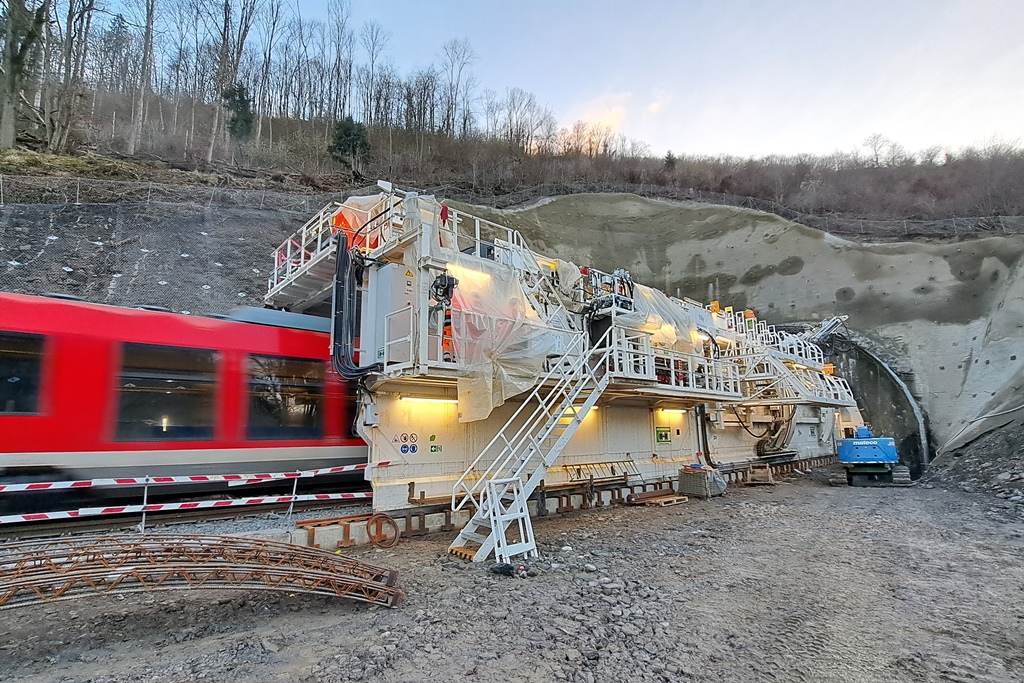Herrenknecht, better know for its tunnel boring machines has developed a tunnel widening system (TES) to enable railway lines to be electrified.
In the second half of the 19th and early 20th centuries, hundreds of railway tunnels were built in Europe. They are largely still in operation today. In the coming decades, a many are due for renewal. The Herrenknecht Tunnel Enlargement System (TES) offers a solution for widening the profile of old railway tunnels while rail traffic continues to run.
Two TES machines from Herrenknecht have been in use since January 2024 for the renewal of 160-year-old Deutsche Bahn (German Railways) tunnels near Limburg an der Lahn. The tunnels are being renovated while rail service continues. The 426-metre long Fachingen tunnel and the 732-meter long Cramberg tunnel are part of the Lahn Valley Railway connecting the cities of Koblenz and Wetzlar.
The tunnels need to be enlarged in order to electrify the lines and accommodate larger track gauges and faster trains.
With the TES, first the existing tracks are dismantled and a track is laid in the middle of the existing tube instead. Rail traffic continues to run on this track throughout the entire construction period. The TES moves forward step by step during excavation for the widening of the tunnel. At the same time, it serves as a protective enclosure and separates the construction work from live rail traffic.
For the two double-track tunnels of the Lahn Valley Railway, the radius of the tunnel cross section is being enlarged by a two metres, thus achieving dimensions corresponding to current new tunnels.

The TES on the Fachingen and Cramberg tunnels are 46-metre long, 270-tonnes and have a diameter of around 12 metres. They run on foundations and rails specially laid in the tunnel. The machines are equipped for conventional excavation and support work. Depending on the hardness of the rock, excavation is done by chiselling or blasting. First, the old tunnel walls, usually masonry, are broken out. This is followed by excavation of the rock by chiselling or blasting and removal of the material. The excavated material falls to the side of the machine into the tunnel invert and is removed by separate conveyor and loading equipment. After each drilling and blasting round, a shotcrete manipulator applies temporary shotcrete support. The rock is also stabilised with anchors. Reinforcement mesh and steel arches together with the shotcrete and anchors form the initial support. Once tunnelling with the TES has been completed, the final lining of the tunnel using in-situ concrete is then carried out in a second construction phase.
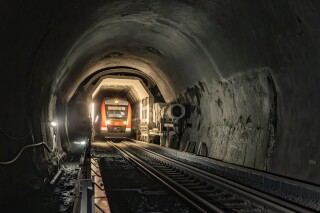
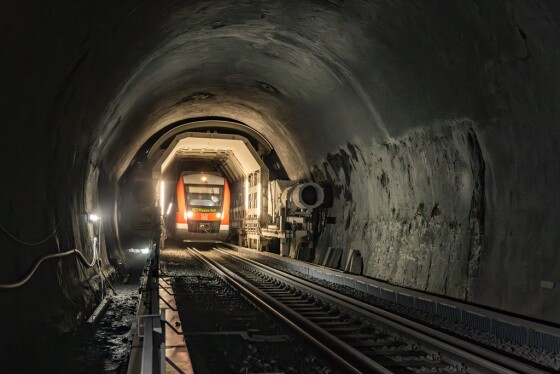
The TES consists of three parts. The front part of the machine is used for pre-excavation protection. It prevents the existing tunnel from collapsing in the area ahead of the respective excavation work or rock falling onto the tracks. The middle section is the carrier for the equipment required for tunnelling: telescopic drill rigs on both sides, hydraulic impact hammer on a central boom with a large radius of action, shotcrete system on a ring guide. The machine has large, retractable working platforms that allow workers to reach the tunnel face and the intrados. The equipment for operating the TES is located in the rear part of the machine. This includes a hydraulic station to supply the hydraulically driven equipment, a compressor for the supply of compressed air, the electrical system, and a material storage.
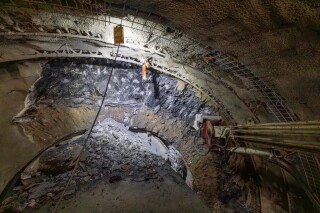
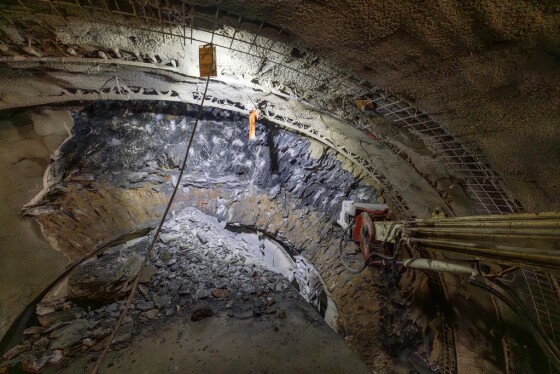
The design of the TES used on the Lahn Valley Railway incorporated experience from Herrenknecht TES first used in Spain to renovate the 558-metre long Gaintxurizketa tunnel between Astigarraga and Irun in the foothills of the Basque Pyrenees. This was completed in March 2024.

